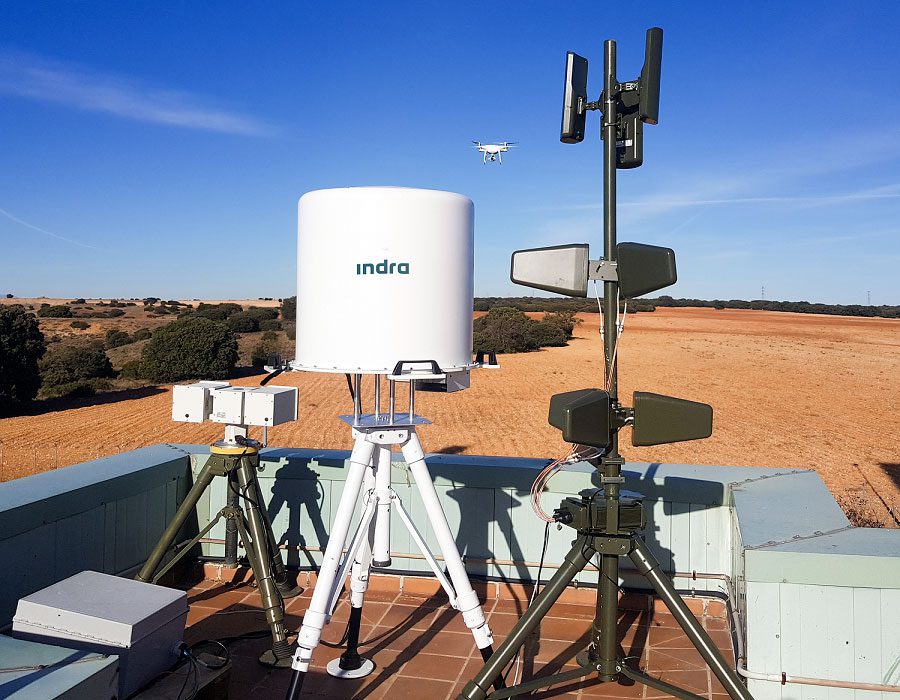The market for anti-drone systems was worth 641.9 million dollars in 2020 and is projected to grow to 4,604.4 million dollars by 2028, with a CAGR of 28.5% during the forecast period. Unmanned aerial vehicles (UAVs) are increasingly being used for commercial and recreational purposes in several nations, which has increased the frequency of security breaches in specific public venues and limited government spaces.
Drones with cameras built in are very popular, especially among professional photographers looking for the latest equipment for aerial photography and filming. Defense officials and the government are becoming more concerned about drone safety as UAV deployment increases. Global challenges to homeland security have arisen as a result of an increase in the use of unlicensed flying aircraft in restricted regions or for snooping through windows and neighborhoods. No of the location or time, these items can record audio and video. Manufacturers are concentrating on the creation of fresh and inventive systems that can prevent drones from flying in regulated airspaces.
Commercial drones raise privacy and safety concerns, are subject to regulations, and are plagued by other problems, such as the need for highly qualified amateur pilots to prevent drone mishaps. A security hole in public safety has been exposed globally by events involving small UAVs. The homes and lives of civilians may be harmed in a collision between a drone and an anti-UAV defense system. Despite its ability to detect UAVs, a counter-UAV system has no control over where these UAVs will crash, raising questions about public safety. Because of this, governments all over the world have enacted strict anti-drone rules. In the majority of nations, using comparable equipment to jam radio signals frequently necessitates obtaining authorization and several permissions and licenses first.
Further key findings from the report suggest
Key participants include Saab AB (Sweden), Raytheon Co. (U.S.), Blighter Surveillance Systems (U.K.), Dedrone (U.S.), Israel Aerospace Industries (Israel), Droneshield Ltd. (U.K.), Thales Group (France), Lockheed Martin Corp. (U.S.), Northrop Grumman Corp. (U.S.), and SRC, Inc (U.S.).
It has been difficult for manufacturers and integrators to design and implement an efficient anti-drone system for detection and interdiction applications. Every detection method has some shortcomings. The detecting capability of RF sensors can be diminished by electromagnetic interference. Communication antennae, two-way radios, telemetry systems, power lines, and LED lights are just a few of the numerous potential urban interference sources. In severe weather with poor visibility, camera systems may mistake a drone for a bird or an airplane. Small drones and UAS that are flying extremely near the ground may be difficult for radar systems to detect. Certain RF sensors, including some systems branded as “passive,” may also emit RF signals that could disrupt other communications, making their deployment potentially unsafe.
For the anti-drone market during the anticipated period, the laser system technology segment is anticipated to expand more quickly. Lasers harm UAV cameras and momentarily render the drone inoperable. By interfering with the downward sensors, they can forcibly force the rogue drones to auto-land. The demand for laser system expansion in the anti-drone industry is being driven by the growing necessity for the prompt destruction of rogue drones at the moment of inhibition.
Mode of Operation (Revenue, USD Million; 2018–2028)
- Detection
- Radar
- Radio-Frequency
- Electro-Optical
- Infrared
- Acoustic
- Combined Sensors
- Disruption
- F. Jamming
- GNSS Jamming
- Spoofing
- Laser
- Nets
- Projectile
- Others
- Both
Platform types (Revenue, USD Million; 2018–2028)
- Ground-based
- Hand-held
- UAV-based
End-Use (Revenue, USD Million; 2018–2028)
- Military & Defense
- Commercial
- Public places
- High-importance infrastructure
- Households
- Homeland Security
Regional Outlook (Revenue in USD Million; 2018–2028)
- North America
- Europe
- the Asia Pacific
- Rest of the World
- Middle East & Africa
- Latin America



































